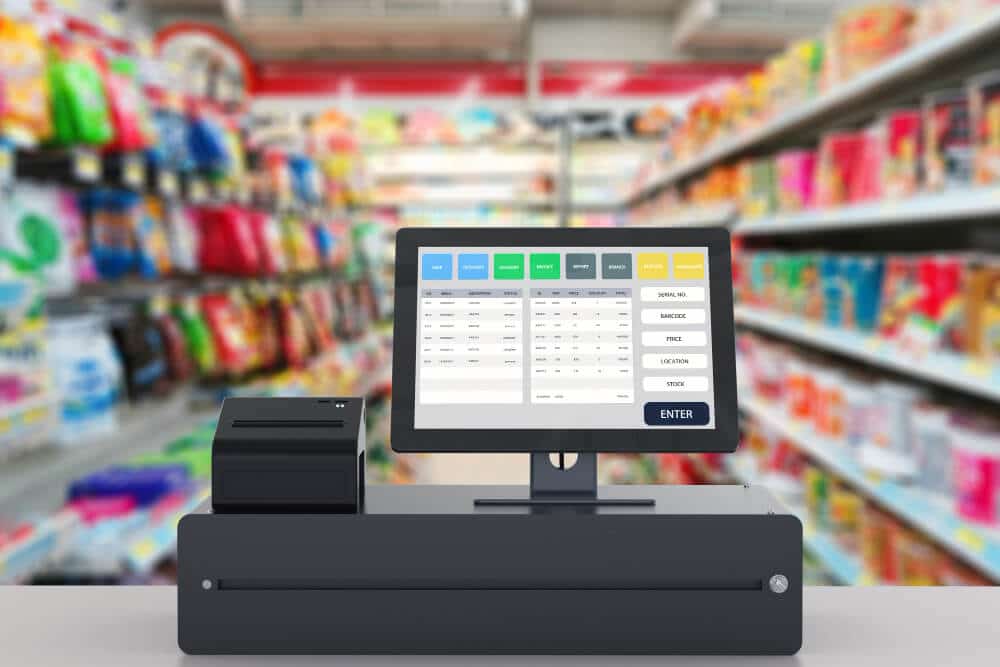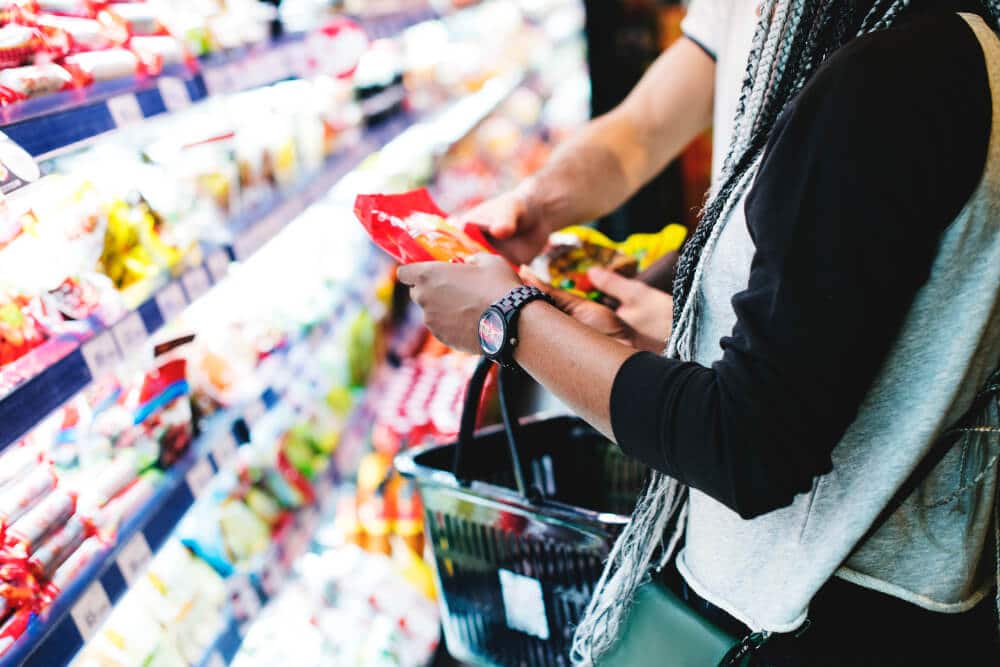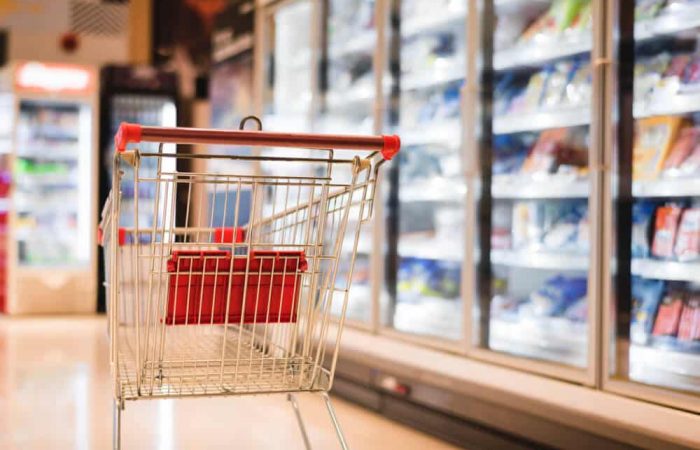Grocery stores are some of the busy and active retail establishments and they have to manage their inventory to keep up with customer demand.
Every product and item in a grocery store must be tracked, ensuring that it’s stocked when needed and that prices are updated as needed.
Grocery stores use a variety of methods to keep track of their inventory. Many stores use a combination of manual methods and automated, computer-based systems to monitor their inventory.
Without an effective inventory tracking system, grocery stores can quickly find themselves overstocked or understocked on certain items. Let’s find out more about grocery store inventory management and how to keep it up to date.
Table Of Content
How do grocery stores keep track of inventory?
What are some common techniques for tracking inventory in a grocery store?
Top components of grocery store management
How does technology play into the way grocery stores work?
Best-habits-to-improve-grocery-store-inventory-management
How do grocery stores keep track of inventory?
When it comes to keeping track of inventory, there are a few different methods that grocery stores use.
The most commonly used method is barcode scanning. By using barcodes to track inventory, stores can quickly and easily identify what needs restocking or has been purchased by customers.
This type of system also allows stores to monitor sales trends over time, which helps them determine when items need to be restocked and adjust their purchasing decisions accordingly.
POS systems or Point of Sale systems are becoming increasingly popular in grocery stores as well.
These systems allow customers to scan their items at the checkout and also provide a detailed record of all transactions that have taken place.
This information can then be used to monitor inventory levels, identify customer buying patterns and create promotions based on this data.
Finally, RFID tags are being used in some stores to track inventory more efficiently. RFID tags are small chips that are attached to products that can be scanned and tracked easily.
Smaller stores may also rely on manual inventory tracking or be more reliant on their employees to remember what needs restocking.
Manual tracking requires more effort, but can still provide stores with valuable information about their inventory levels.
Overall, grocery stores use a variety of methods to keep track of their inventory and ensure that customers always have the items they need in stock.

What are some common techniques for tracking inventory in a grocery store?
Here are some of the top techniques for tracking inventory in a grocery store:
1. Barcode scanning
One of the most common and effective methods for tracking inventory, barcode scanning is used to quickly and accurately identify what has been purchased and what needs restocking.
To use barcode scanning, stores will place a barcoded label on each item and then use a scanner to read the code when an item is purchased.
This allows stores to quickly access detailed information about their inventory levels and restocking needs.
2. POS systems
If your store deals with too much crowd and transactions, then you might want to consider implementing a POS system for grocery store.
These systems allow customers to scan their items at the checkout and also provide stores with detailed records of all transactions that occur.
This information can be used to monitor inventory levels and identify customer buying patterns to create more targeted promotions.
3. RFID tags
RFID tags are small chips that are attached to products and can be scanned and tracked easily.
This method is often used in large grocery stores as it allows them to quickly and accurately track inventory levels without having to rely on manual tracking or waiting for customers to purchase items.
4. Manual tracking and inventory logs
In contrast to larger stores, smaller ones may choose to track their stock using pen and paper or rely on their employees.
This requires more effort, but can still provide valuable insights into inventory levels and sales trends.
By making use of the right methods and techniques, grocery stores can ensure that they always have the items customers need in stock and can make informed purchasing decisions.

Top components of grocery store management
By understanding the different components of grocery store management, stores can ensure they are providing customers with a positive and efficient shopping experience.
This also ensures that their inventory levels are up to date and they can maximize profits.
1. Bulk stock and orders
Bulk stock and order are one of the most important components of grocery store management.
Since you will be dealing with multiple products at a time, you have to make sure that you can keep up with the number of items in stock, as well as order new stock when necessary.
By making sure that you have the right amount of stock and that it is being replenished promptly, you can ensure that your customers always have what they need.
2. Overstocking and wastage
Another important component of grocery store management is avoiding overstocking and waste.
When stocks are overstocked, they can be a burden on the budget and take up valuable storage space. Similarly, when items go to waste due to expiry or other reasons, it impacts your bottom line.
Therefore, it is important to track inventory levels closely and ensure that you are only ordering what is necessary.
3. Product pricing and promotions
Product pricing and promotions also play an important role in grocery store management.
By setting the right prices for your products, you can attract customers while still ensuring a healthy profit margin. Moreover, by using promotions, you can entice customers to purchase more items and increase sales.
4. Categorization
One thing that can’t be done by machines and algorithms is categorizing products. You will need human efforts to determine the best way to categorize products and make sure they are easy to find in stores.
By doing this, you can ensure that customers can quickly find what they’re looking for and increase sales.
A rule of thumb is that you put the top brands, most popular items, and seasonal products at eye level so customers can easily spot them.

Streamline your business with Octopos– A Complete POS System with Big Boys Tools without the Big Price
It is a lot more than a point of sale. Octopos is easy and intuitive for you and your staff to use. Yet you get all these sophisticated tools to manage inventory, track and engage customers, get meaningful insights into your business, and much more.
5. Keeping the inventory data up to date
Last but not least, you need to make sure that the inventory data is up to date.
This is important because it will ensure that customers can always find what they’re looking for and that store staff has accurate information when placing orders or dealing with customer inquiries.
By using various methods such as POS systems, RFID tags, and manual tracking, you can ensure that your inventory data is always up to date.
How does technology play into the way grocery stores work?
Just like any other field, technology plays an important role in the way grocery stores manage their inventory and operations.
By making use of the latest technologies such as RFID tags, POS systems, and analytics software, stores can make sure that they always have accurate information on stock levels and sales trends.
This allows them to quickly adjust purchasing decisions and respond to any changes in demand.
Moreover, it also allows them to automate certain processes and free up time for store staff, enabling them to provide better customer service.
Human error can cost a grocery store time and money, but with the help of technology, stores can reduce these risks and ensure that their inventory management is running smoothly.
By using a combination of hands-on management and automated processes, stores can keep track of their inventory levels and make sure that customers always have access to what they need.

Best habits to improve grocery store inventory management
Here are some of the best practices that can help you improve your grocery store inventory management:
1. Keep an eye on product shelf life
One of the most important things to keep in mind when managing inventory is product shelf life. By tracking expiration dates and gradually reducing stock levels, you can avoid waste and expired products.
You can save and organize product information in a database and set reminders to ensure that none of your products expire before they can be sold.
2. Manage each product individually
One of the most common mistakes in inventory management is to treat all products the same. Each product has its unique characteristics, so it’s important to manage each one individually.
By doing this, you can avoid overstocking or under-stocking any particular item and ensure that you are always able to meet customer demand.
3. Understand your customers’ behavior
Another important factor to consider when managing inventory is customer behavior.
By studying past sales data and trends, you can get an idea of what products customers are likely to buy and how often they need replenishing.
This will help you make better decisions when it comes to stocking levels and promotions.
Having a POS system in place will make it easier to track customer data and have a better understanding of their behavior.
4. Analyze sales data regularly
It’s important to analyze your sales data regularly. By doing this, you can identify any potential problems or opportunities that may arise and adjust your inventory levels accordingly.
Technologies such as analytics software can make it easier to track sales data and make the process of analyzing it more efficient.
5. Monitor stock levels in real-time
One of the best practices every grocery store should be doing is monitoring stock levels in real-time.
By using RFID tags and other tracking technologies, you can keep track of what items are in the store at all times.
This helps to ensure that customers always have access to the products they need, while also preventing overstocking or understocking of any particular item.
By following these best practices, grocery stores can keep track of their inventory and ensure that customers always have access to the products they need. This helps to improve operations, reduce costs, and maximize profits.
Conclusion
So there you have it! Now you know how grocery stores keep track of inventory and the best practices they can use to improve their inventory management. It’s an important part of the retail industry and one that must be managed correctly to stay competitive. With the help of the right technology and the right strategies, grocery stores can ensure that their inventory management is running smoothly.

